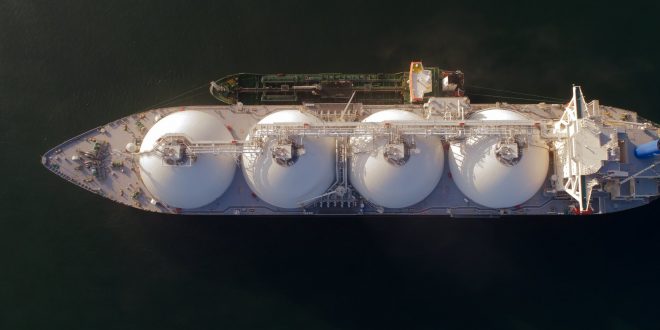subsidiary Nihon Tug-Boat vessel Ishin received its first carbon neutral LNG (CNLNG) from Daigas Energy at Sakai Senboku Port, Osaka on 1 September 2021.
This marks the first use of CNLNG as vessel fuel in Japan. Ishin was supplied at the wharf from a lorry, then returned to towage and ship manoeuvring services.
Daigas Energy and Nihon Tug-Boat have signed a memorandum of understanding covering the supply of CNLNG over several years. Its carbon neutral designation means all greenhouse gases generated throughout the lifecycle, including natural gas extraction, liquefaction, transport, production and combustion processes were offset by carbon credits.
Carbon offset credits are a tradeable form of quantified greenhouse gas reduction and absorption, though the introduction of renewable energy, energy-efficient equipment, or forest management.
MOL expects this industry-first delivery will enable wider adoption of CNLNG in the future as vessel fuel.
247-gt tug Ishin has been operated by Nihon Tug-Boat since February 2019.
Initially, LNG was supplied by Osaka Gas Co, but on 1 April 2020, Daigas Energy merged with Osaka Gas and succeeded this business.
Ishin uses LNG to power two Yanmar 6EY26DF dual-fuel main engines, generating speeds of 16.4 knots. It has an overall length of 43.6 m, breadth of 9.20 m and draught of 3.15 m.
Nihon Tug-Boat estimates its use of LNG reduces CO2 emissions by around 25% compared with amounts from similar tugs run on fuel oil.
Because of this, Ishin has the top rating of five stars in Japan’s Ministry of Land, Infrastructure, Transport and Tourism’s energy-saving rating programme for coastal ships.
Supply of CNLNG is part of MOL’s strategic goal to achieve net-zero greenhouse gas emissions by 2050.
This goal was set out in MOL’s Environmental Vision 2.1 in June 2021, when the group also set a strategy to adopt clean alternative fuels to reduce its carbon footprint. MOL intends to introduce 90 LNG-fuelled vessels to its fleet by 2030, of which Ishin is its first. MOL promotes the wider use of LNG-fuelled vessels, “while working to adopt new alternative fuels such as ammonia and conducting research and development on the use of synthetic methane”, to contribute to further reducing greenhouse gas emissions.
These will not just be from its own operations, “but also to meet the needs of customers and society to reduce the environmental impact of its activities.”

 Iran Energy News Oil, Gas, Petrochemical and Energy Field Specialized Channel
Iran Energy News Oil, Gas, Petrochemical and Energy Field Specialized Channel



